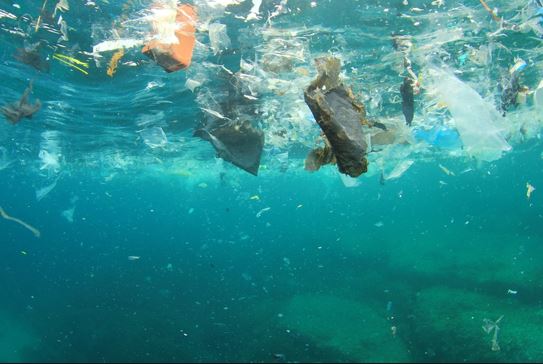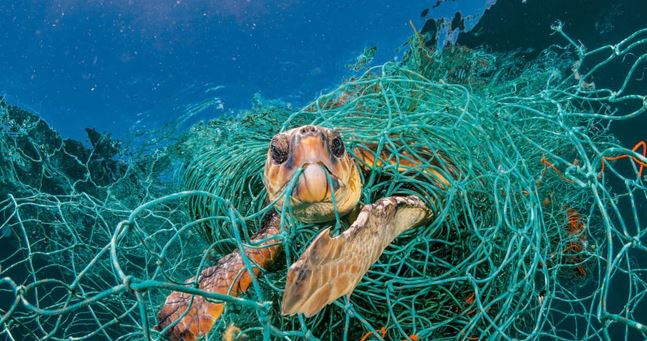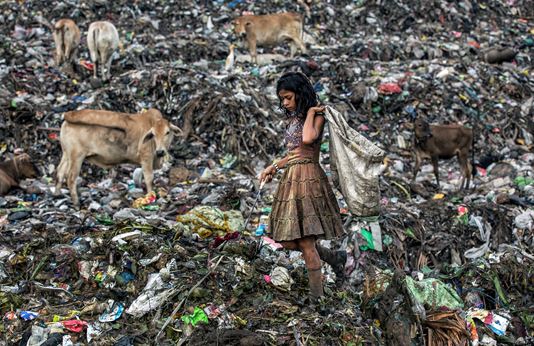While plastic has numerous important uses, we have turned out to be dependent on single-use or dispensable plastic. Now even the most profound point on Earth is strongly contaminated with plastic, researchers have found, illustration how pervasively the world has been infected.
Around the globe, one million plastic drinking bottles are bought each moment, while up to 5 trillion single-use plastic sacks are utilized worldwide consistently. Altogether, half of all plastic created is intended to be utilized just once and afterwards abandoned.

Plastic waste is currently so universal in the regular habitat that researchers have even recommended it could fill in as a land pointer of the Anthropocene period.
Examiners measured that more than 8.3 billion tons of plastic have been created since the mid-1950s. About 60% of that plastic has wound up in either a landfill or the regular habitat.
Just 9% of all plastic waste at any point created has been reused. About 12% has been burned, while the rest 79% is collected in landfills, dumps or the common habitat.
Recently, the researchers explored the depths of the Mariana Trench in the western Pacific Ocean, near Challenger Deep, the lowest place from the surface of the planet. They found the biggest amount of microplastics in the open ocean when compared with surveys from elsewhere in the Pacific, Atlantic and Arctic seas.

The Chinese experts said, “Man-made plastics have debased the most remote and deepest places on earth”. “The hadal zone is likely one of the biggest sinks for microplastic trash on Earth, with unknown though possibly harming effects on this delicate biological system.”
Other ongoing studies have shown the extent of human impacts into the Mariana Trench, with “remarkable” level of toxins being found there and even plastic being discovered in stomachs of distant ocean animals. Microplastics have additionally been found in Swiss mountains, tap water and human faces.
A huge number of tonnes of plastic fill the seas consistently, yet where all the contamination covers up isn’t notable. The specialists from the Institute of Deep Sea Science and Engineering in Hainan gathered base water and sediment samples from 2,500m down to 11,000m beneath ocean level. By comparing, Mount Everest is 8,850m above ocean level.
Cigarette butts whose channels contain modest plastic filaments were the most widely recognized sort of plastic waste found in the earth in an ongoing worldwide study. Drink bottles, bottle tops, nourishment wrappers, basic supply sacks, drink tops, straws and stirrers were the following most regular things. A large number of us utilize these items consistently, without considering where they may wind up.
In the meantime, sea plastic is evaluated to kill a large number of marine creatures consistently. Almost 700 species, including jeopardized ones, are known to have been affected by it.

In a recent incident according to news reports, a decaying corpse of 31-foot (9.5-meter) sperm whale was found in shallow waters just off Kapota Island in the Wakatobi National Park, Indonesia. The dead sperm whale that reached ashore in eastern Indonesia gulped 6kg of plastic items included 115 drinking cups, four plastic bottles, 25 plastic bags and two flip-flops were found in the stomach of the dead whale.
India creates 5.6 million tons of plastic waste every year and its urban communities produce around 15,000 tons of plastic waste in multi-day out of which 9,000 tons are gathered and prepared/reused while the staying 6,000 tons more often than not are dumped in landfills, boulevards and channels, as indicated by a January 2015 evaluation report of the Central Pollution Control Board (CPCB).

Additionally, three of the world’s ten streams conveying 90% of plastic to the seas are in India – the Indus, the Ganga and the Brahmaputra.
A stunning 8 million tons of plastic cover up the planet’s seas consistently. How did it arrive? A great deal of it originates from the world’s streams, which fill in as immediate channels of junk from the world’s urban areas to the marine condition.
Plastic is genuinely a foe of the planet. There is a desperate need to understand its risks and meet up as a race who needs the eventual fate of the earth to be better and safe. Teach yourself about your environment, make others mindful and approach slowly and carefully to expel plastic from your homes, workplaces and neighbourhoods.
Do really humans deserve the earth? If yes, till when because of the fact that at the development rate in which we are contaminating our biological community won’t last for long and is turning into a risk to endangered species and in addition to coming age.
Pic Credits: National Geographic







Could you inform me what theme are you using on your website? It looks good.